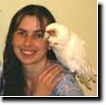Feather Problems
in Gouldians & Other Small Finches
Kristen Reeves, Meadowlark Farms Avian Supply, Inc.
Feather issues can be nutritional, health related, or in my experience, hereditary (genetic). Read below for more information!
(See External Parasites for more photos and information)
NORMAL MOLT
Birds go through both an annual molt (considered a “hard” molt) as well as a shoulder & wing molt (considered a “soft molt”) and will sometimes lose individual feathers through the rest of the year. The typical annual molt is obvious but nothing to worry about. A normal molt is usually ugly and can be a bit frightening to the new bird keeper, but rest assured it is a normal process. As long as your bird is receiving proper nutrients, exercise, and lighting, they will be just fine in about 4-6 weeks!

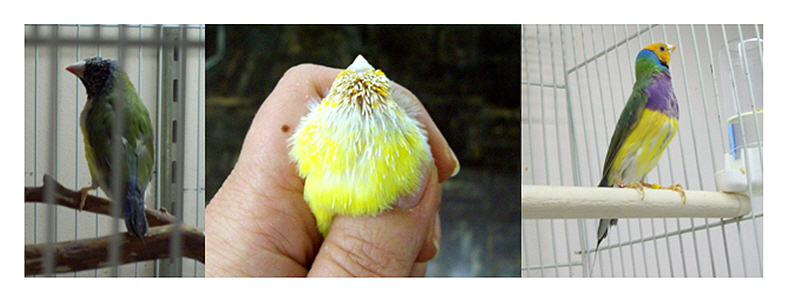
The soft molt is much less obvious, though you may notice the shoulders and wings looking a bit ragged, or the bird may be missing feathers right at the crest of the shoulder for a while until they fill back in. This is also normal and is nothing to worry about! Below are photos of a normal molt.

Notice in the molting birds photos above, the breast feathers have lost some color. These will be replaced with bright glossy feathers as the bird produces new ones. Replacing head feathers is usually the last and most obvious part of the molt and can make a bird look pretty pitiful!
ABNORMAL MOLT
.jpg) Losing large numbers of feathers at one time out of season or not replacing all of the feathers is considered an abnormal molt.
Losing large numbers of feathers at one time out of season or not replacing all of the feathers is considered an abnormal molt.
Molting is a natural part of being a bird, but when a bird doesn't molt annually, doesn’t “complete” a juvenile molt, or molts out of season, this is called an “abnormal molt” and may be a symptom of a larger problem. The bird keeper must then evaluate the situation:
- Nutrition- Is the bird receiving the proper nutrients?
- Stress- Has the bird been under any undue stress that might cause it to lose feathers?
- Environment- is there an unseen parasite in the aviary? Change in light, heat or humidity?
.jpg)
Feathers may have been damaged by many factors including parasite infestations, over preening, disease, nesting, or just need to be replaced. The birds may replace all of their feathers during the annual molt, or if nutrition is lacking, only a small portion.
BALDING
Balding may occur for a variety of reasons.
In a large aviary with many birds, there is literally a “pecking order”. Birds will stake their territory and let the other birds know who is in charge. Oftentimes one bird will become the victim of violent attacks from the other birds. These dominant birds will peck at the head and face of the lesser bird, therefore plucking the feathers away from those areas. However, if your bird is alone in a cage, or if you are certain no other bird is attacking it, chances are your bird has a nutritional deficiency. In Gouldians not being pecked by other birds, this balding is often due to a nutritional or scaly face mite related issue.
Creating a balanced diet including a good vitamin supplement, calcium & iodine, a mineral grit with both soluble and insoluble forms of calcium grit, and the seed mix appropriate for the species you are keeping will all help prevent balding in birds who are nutritionally defunct. Following a preventive maintenance program including both internal and external parasite control will help prevent scaly mites.
DAMAGED FEATHERS
This bird had a couple of issues going on that were affecting the quality of his feathers. First, he had feather mites that were causing him to over preen hence damaging his feathers. He had a rather intense case of scaly face AND leg mites, and also had an iodine deficiency affecting his ability to produce and maintain head feathers. He was also what I refer to as “shaggy” with loose, soft feathers instead of the tight, harder feathers I look for in my birds. This shagginess indicates less than optimal nutrition in the aviary from which he was purchased. However, once he goes through a full molt, all of this damage will be repaired and he will be one fine looking bird!
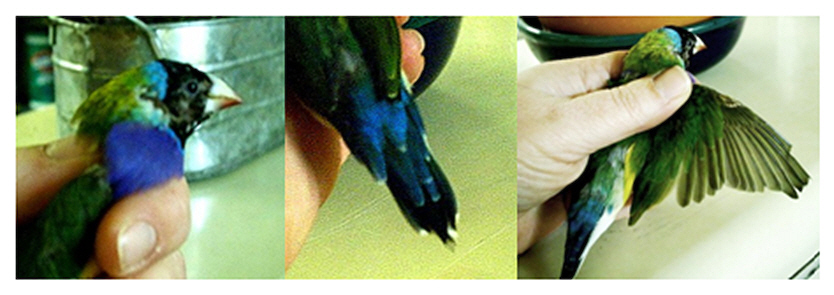
To remedy the mite situation, he was quarantined. Due to the severity of the scaly mites, Scatt was applied on days 1, 10 (not recommended) and 21 and S76 (Ivermectin) given in both drinking and bath water. He was also given untreated bath water daily on days not scheduled for S76. The bath contained citric acid to wash away any dead mites and leave his feathers glowing (though it will also strip the oils from the feathers).
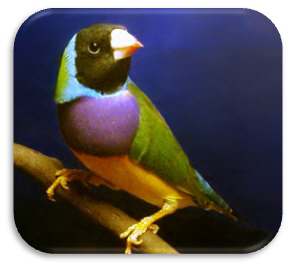
To remedy the “shaggy” condition, he was given a high protein diet supplemented with Breed, Beak & Feather Tweak. Biotin was added to his supplement routine and his iodine was adjusted temporarily to allow for a smoother molt.
He no longer has signs in his feathers of the mites and pin feathers continue to emerge as his nutrition has balanced out. He has been aggressively treated for scaly mites on both the face & legs.
FEATHER PLUCKING
Feather plucking in finches is usually attributed to a nutritional deficiency or mite infestation. Birds who pluck their own feathers may also be stressed or have some other illness that is irritating them. If after reevaluating their diet, removing any stress, and eliminating the possibility of mites or other illness they are still plucking their feathers, it could be that they are “just pluckers”. Birds whose nutrition is excellent, are not stressed, and do not have mites but who still pluck feathers should be housed away from your other birds.
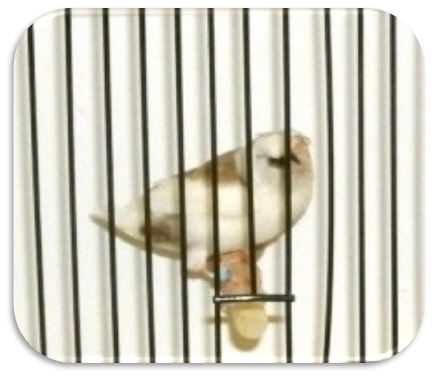
In my experience, feather plucking can be a learned behavior. I once owned a Zebra hen who would pluck her own feathers and those of her mate. When she produced her first clutch, she proceeded to pluck every feather off of those six chicks, two of which proceeded to pluck their own feathers and those of their nest mates, daily. After evaluating their diet and having them tested for mites or other potential illness, it was decided that they were “just pluckers”. These birds were never bred and consequently lived out their lives partly bald.
There ARE other species who routinely pluck feathers out of themselves and their cage mates. Societies and Canaries are notorious for plucking tail feathers from their cage mates, and sometimes even plucking their own feathers to line their nests.
FINAL WORD...
The information contained here is for reference purposes only. As always, if you suspect your bird is sick, take it to an Avian Veterinarian!




